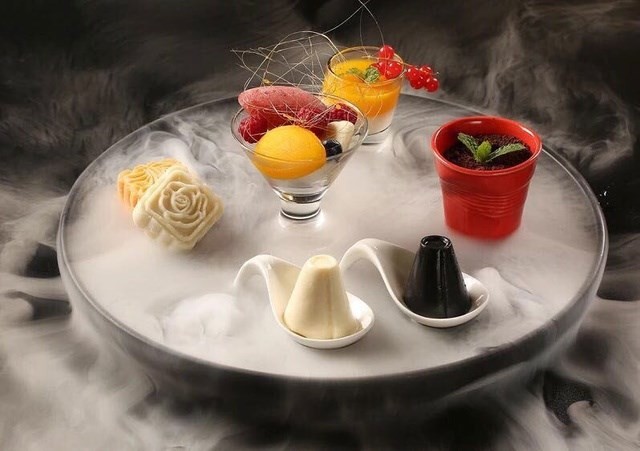Introduction to Molecular Cuisine
Definition and Concept
Molecular Kitchen, also known as molecular gastronomy, represents a cutting-edge culinary movement that transcends traditional cooking methods. This innovative approach does not merely involve "molecular" cooking but rather employs advanced scientific principles to revolutionize the culinary landscape. Chefs in this domain leverage state-of-the-art equipment and tools, select novel ingredients, and adopt unconventional cooking techniques to craft dishes that defy conventional expectations.
Central to molecular gastronomy is the application of scientific methodologies to understand and manipulate the physical and chemical properties of food molecules. By utilizing modern instruments, chefs meticulously study the transformations that occur during the cooking process, examining the intricate relationships between cooking temperature, time, and the addition of various substances. This scientific scrutiny allows for the creation of dishes that undergo significant physical and chemical changes, resulting in culinary experiences that are both visually stunning and gastronomically innovative.
The essence of molecular gastronomy lies in its ability to deconstruct and reconstruct food, thereby subverting traditional notions of appearance and taste. This approach not only challenges the conventional boundaries of cooking but also strives to elevate the nutritional value of food to an optimal level. Through this scientific exploration, molecular gastronomy fosters a diverse array of cooking concepts and methods, offering a fresh perspective on how we perceive and prepare food.
Visual vs. Taste Perception
Molecular gastronomy, at its core, involves a meticulous process of deconstructing the original appearance of ingredients, re-mixing them, and reshaping them into culinary delights. This technique often leads to a fascinating paradox: what you see on your plate may not always align with what you taste. For instance, a dish might visually resemble a familiar fruit, yet its flavor profile could be entirely different, drawing from a completely unrelated ingredient.
This dissonance between visual and taste perception is a hallmark of molecular cuisine, where the molecular structure of ingredients is altered through physical or chemical reactions. This can involve transforming solid ingredients into liquids or even gases for consumption, or making the flavor and appearance of one ingredient mimic another. For example, a visually appealing "egg yolk" made from a citrus fruit can offer a burst of unexpected tanginess, challenging the diner's expectations.
| Visual Appearance | Taste Experience |
|---|---|
| Familiar Fruit | Unexpected Tanginess |
| Egg Yolk | Citrus Flavor |
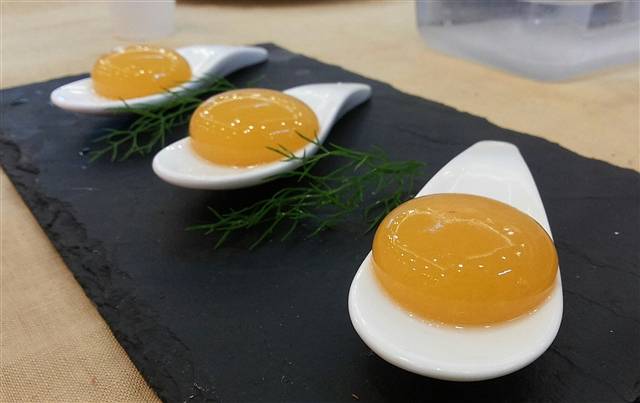
The techniques employed in molecular gastronomy, such as low-temperature cooking, emulsification, and spherification, are designed to create these unique sensory experiences. These methods not only enhance the visual appeal of the dish but also introduce a new dimension to the dining experience, where the interplay between sight and taste becomes a delightful exploration of the unexpected.
Historical Context and Early Examples
Ancient Chinese Techniques
Molecular gastronomy, often perceived as a modern culinary innovation, has deep roots in ancient Chinese culinary practices. This scientific approach to cooking, which involves manipulating the molecular structure of ingredients, has been employed in traditional Chinese street snacks for centuries. For instance, the creation of tofu puffs and cotton candy showcases ancient techniques that align with the principles of molecular gastronomy.
Tofu puffs, a popular street food, are made by adding gypsum powder to soymilk, a process that induces a chemical reaction leading to the coagulation of proteins and the formation of solid tofu. This method not only transforms liquid soymilk into a solid but also alters its texture and flavor, demonstrating the essence of molecular cuisine. Similarly, cotton candy, another beloved snack, is produced through a process of centrifugal force that spins heated sugar into fine threads. This technique converts a solid sugar cube into a fluffy, airy confection, highlighting the transformation of ingredients through physical means.
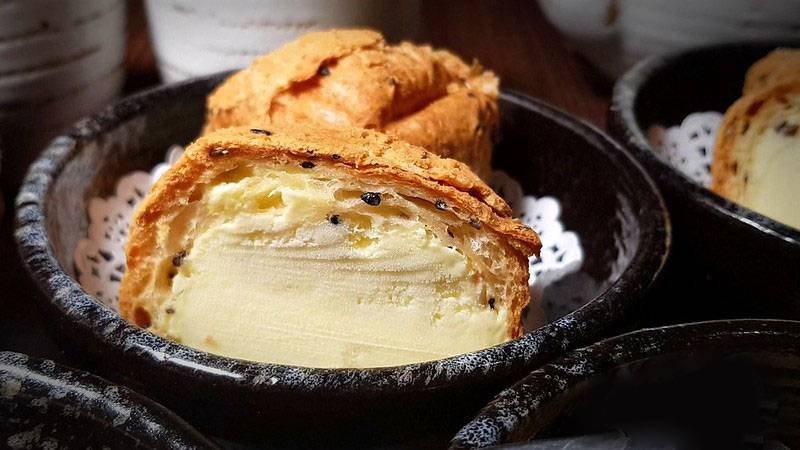
These ancient techniques underscore the long-standing presence of molecular gastronomy in Chinese culinary history. By understanding and appreciating these traditional methods, we can better grasp the evolution of molecular cuisine and its profound impact on modern gastronomy.
Key Techniques in Molecular Gastronomy
Low-Temperature Cooking
Currently, molecular cuisine encompasses four primary techniques: low-temperature cooking, solidified spherical technique, emulsification technique, and liquid nitrogen rapid cooling technique. Among these, low-temperature cooking stands out as one of the most widely utilized methods.
Sous-vide, a French term translated as "low-temperature slow-cooking," is a scientific approach that identifies the optimal temperature range for each ingredient's protein cells to burst. This technique calculates the precise duration required to cook the food within this burst temperature range. The process involves sealing the food in a vacuum bag and then cooking it slowly at temperatures ranging from 45 to 80°C.
This method not only preserves the collagen fibers within the food but also ensures that the food releases the most monosodium glutamate at its most suitable temperature. Consequently, low-temperature slow cooking maximizes the retention of the food's tender texture and nutritional value. This technique is particularly effective in maintaining the integrity of delicate ingredients, ensuring that they remain flavorful and nutritious without the risk of overcooking.
Emulsification and Foaming
Emulsification technology, initially synonymous with the process of blending water and oil, has evolved significantly since its inception in the creation of mayonnaise. Today, it plays a crucial role in the production of foams, a key technique in molecular gastronomy. One of the primary substances used in this process is soy lecithin, a natural emulsifier that possesses both hydrophilic and lipophilic molecules. These molecules are essential in maintaining the stability of the foam created by the interaction of water and air.
Chefs often incorporate soy lecithin into the juices of various ingredients, blending them thoroughly with a high-speed blender. The mixture is then transferred into a nitrogen bottle, where the foam is further stabilized. The density and firmness of the resulting foam are directly proportional to the amount of air incorporated during the blending process. This technique is not only visually appealing but also enhances the texture and mouthfeel of the final product.
| Component | Role in Foaming |
|---|---|
| Soy Lecithin | Acts as an emulsifier, stabilizing the foam by balancing hydrophilic and lipophilic properties. |
| Blender | Facilitates the incorporation of air, influencing the foam's density and firmness. |
| Nitrogen Bottle | Provides a controlled environment to stabilize the foam, enhancing its longevity. |
This method is extensively utilized in the creation of sauces, where the foams not only add a unique visual dimension but also contribute to the overall sensory experience by introducing a novel texture. The integration of emulsification and foaming techniques in molecular cuisine underscores the innovative approach chefs take to redefine traditional culinary boundaries.
Spherification and Liquid Nitrogen
Spherification is a cornerstone of molecular gastronomy, transforming various liquids into visually captivating spheres. This technique involves the use of sodium alginate, derived from algae, and calcium salts to create a gel-like membrane around the liquid. When these spheres are consumed, they burst in the mouth, delivering a unique sensory experience akin to "false caviar." The origins of spherification can be traced back to the pioneering work at the renowned restaurant El Bulli, where chefs harnessed science to perfect this method. Today, the evolution of spherification has led to the creation of complex, multi-layered spheres that offer surprising textures and flavors.
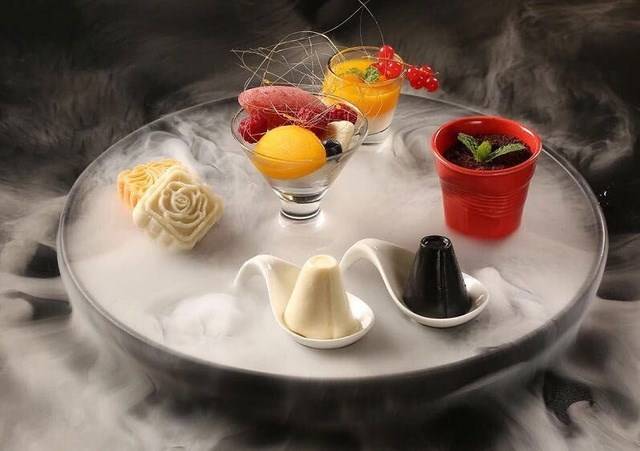
Liquid nitrogen, with its ultra-low temperature of -196°C, plays a pivotal role in molecular gastronomy by inducing rapid molecular changes in food. This process not only alters the texture and taste of dishes but also adds an element of spectacle to the cooking process. The use of liquid nitrogen allows chefs to freeze ingredients instantly, preserving their freshness and creating novel forms that would be impossible with conventional cooking methods. This technique is particularly effective in enhancing the sensory experience, as it can add a crisp, cold layer to dishes, providing an additional dimension to the palate.
Together, spherification and liquid nitrogen represent the innovative spirit of molecular gastronomy, pushing the boundaries of traditional cooking to create dishes that are as much about science as they are about taste. These techniques not only challenge the conventional understanding of food but also invite diners to experience their meals in a whole new way.
Making Molecular Cuisine Accessible
Home Cooking Kits
A recent innovation in the realm of molecular cuisine has been the introduction of home cooking kits, which democratize the once exclusive techniques of molecular gastronomy. One notable example is the Imperial Spherificator launched by Kelp Caviar, a Montreal-based company. This device empowers culinary enthusiasts to transform everyday ingredients into sophisticated molecular dishes, reminiscent of those found in high-end restaurants. Noah Cohen, the founder of Kelp Caviar, aptly describes the product as "a tool that turns all food into caviar." This transformation is achieved through the Spherification process, where ordinary ingredients are converted into caviar-like spheres using a solution of alginate gel and calcium chloride.
The process involves immersing the food in this solution, allowing it to coagulate and form a spherical shell. Once coagulated, the spheres are filtered and can be served as a unique culinary delight. The ease of use and the relatively quick process—approximately fifteen minutes—make the Imperial Spherificator an enticing addition to any home kitchen. This innovation not only bridges the gap between professional and home cooking but also invites more people to explore the fascinating world of molecular gastronomy.
Home Recipes for Molecular Cuisine
Mango Dumplings Recipe
Ingredients
- 250g ripe mango
- 1250g water
- 1.8g fucoidan
- 1.3g sodium citrate (Citras)
- 5g calcium lactate
Directions
-
Prepare the Mango Puree:
- Begin by peeling and cutting the ripe mango into small, manageable pieces.
- Grate the mango pieces to create a smooth puree. Set aside.
-
Mix the Sodium Citrate Solution:
- In a mixing bowl, dissolve 1.3g of sodium citrate (Citras) in 250g of water. Stir thoroughly until the sodium citrate is completely dissolved.
-
Add Fucoidan:
- To the sodium citrate solution, add 1.8g of fucoidan. Stir well to ensure the fucoidan is evenly distributed.
-
Heat and Cool:
- Place the mixture on a stove and heat it until it begins to boil. Once boiling, remove from heat and let it cool to room temperature.
-
Combine with Mango Puree:
- Once the solution has cooled, gently mix in the prepared mango puree. Ensure the puree is well incorporated into the solution.
-
Prepare the Calcium Lactate Solution:
- In a separate container, dissolve 5g of calcium lactate in 1000g of water. Stir until the calcium lactate is fully dissolved.
-
Form the Dumplings:
- Using a spoon or a small ladle, carefully drop the mango mixture into the calcium lactate solution. Allow the mixture to sit in the solution for approximately two minutes.
-
Final Steps:
- After two minutes, lift the formed dumplings out of the calcium lactate solution and pass them through a stream of cold water to stabilize their texture.
- Once stabilized, lift the dumplings out of the water and arrange them on a serving dish.
Enjoy your homemade mango dumplings, a delightful treat that showcases the intriguing techniques of molecular gastronomy!
Melon Caviar Recipe
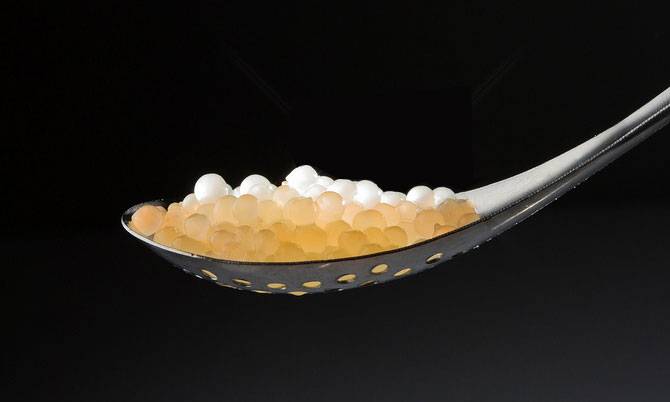
Ingredients:
- 250g melon juice
- 500g water
- 2g fucoidan
- 2.5g calcium lactate
Directions:
-
Prepare the Fucoidan Solution:
- Measure out 80g of melon juice and mix it with 2g of fucoidan until fully dissolved.
- Combine this mixture with the remaining 170g of melon juice and set it aside.
-
Prepare the Calcium Lactate Solution:
- In a separate container with a wide surface area, mix 500g of water with 2.5g of calcium lactate until fully dissolved.
-
Spherification Process:
- Using a syringe, carefully draw up the fucoidan melon juice solution.
- Slowly push the syringe to release small droplets of the solution into the calcium lactate mixture.
-
Coagulation and Rinsing:
- Allow the droplets to sit in the calcium lactate solution for about a minute to form the caviar-like spheres.
- Gently scoop out the spheres and rinse them briefly under water to remove any excess calcium lactate.
-
Serving:
- Transfer the melon caviar to a serving dish and enjoy as a unique and visually stunning garnish or ingredient in your culinary creations.
This recipe exemplifies the principles of molecular gastronomy, transforming a simple melon juice into a delightful caviar-like treat that can elevate any dish with its innovative texture and appearance.
